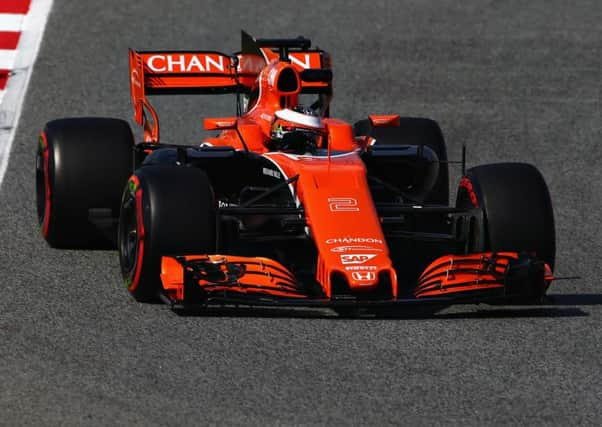F1 technology could fast track North Sea industry recovery


Dr Geoff McGrath, chief innovation officer at McLaren Applied Technologies, said new product design could be speeded up and brought into market ahead of competition using data management, analytics and simulation - just as the F1 team does.
Dr McGrath was speaking at the ITF Technology Showcase in Aberdeen, a major oil and gas industry conference which focuses on the innovation and collaboration required by the sector at a time of depleting natural resources, a low barrel price and cost constraints.
Advertisement
Hide AdAdvertisement
Hide AdThe event heard how North Sea industry can borrow ideas from other sectors to help meet the challenges of accessing the remaining oil and gas within the UK Continental Shelf.
The use of digital technology to improve operational efficiency and performance is already being hailed as an industry saviour.
Dr McGrath said new approaches to design at McLaren, which relied on simulators and millions of pieces of data to analyse and predict performance, saved both time and money.
He said: “In racing, data underpins absolutely everything we do.
“Lets take a concept car - a very complex system of thousands of components that are being innovated continuously.
“Last season on our race car we designed and reingineered and remanufactured unique parts in 20 minutes.
“That is the pace of innovation in a race context.”
Simulators inspired by the aerospace industry, which are powered by mathematical models built from measurements from racing cars, are now used as standard in the design stage.
While the design cycle starts at the desktop with an engineer, it very quickly moves to the simulator stage for testing and real-time refining with data on the car’s performance creating an instant “conversation” over the merits of the prototype.
Advertisement
Hide AdAdvertisement
Hide AdDr McGrath added: “Only when the design passes the simulator test does it get machined and then tested in earnest, like this week in Barcelona.
“Currently, 90 per cent of what passes the simulator test is actually raced.
“Ten years ago, it would have been the other way round. Most things that were designed were thrown away because they didn’t pass the test in the real world.
Data was also being used to drive decision making within the race team.
With the next race is to be held in Australia, the strategy will be run from a control room in Woking, Surrey, more than 9,000 miles away with 300 live data streams feeding race performance to the team in England.
Ultimately the model can group data to predict the winning move in the race.
Dr McGrath said: “When you can do that in your business, you can change the game. And I think we can as the principle applies to most businesses in my experience.”
Other speakers at the event included Josh Valman, 22, winner of TV’s Robot Wars and millionaire founder of services company RPD International.
Advertisement
Hide AdAdvertisement
Hide AdHe told delegates that oil and gas companies waste time and resource by building prototypes in metal when they could return to matchsticks and cardboard.
New technology was also showcased at the event, including a new snake-arm robot from OC Robotics that is due be trialled with Chevron this year.